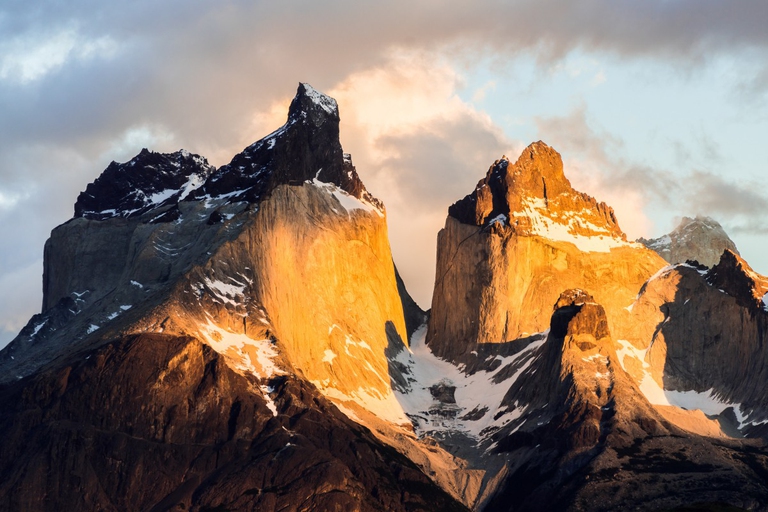
Niseko, Toya-Usu and Shiraoi are three Hokkaido destinations for travellers who want to feel close to the communities they’re visiting.
Chile has unveiled the Patagonian Route of Parks, an incredible trail that connects 17 national parks with the aim of promoting nature conservation and community development.
Becoming one with Chile‘s breathtaking nature, characterised by pristine wilderness and majestic Andean peaks, is now a bit easier thanks to a new hiking route that connects the national parks in the country’s south, the Patagonian Route of Parks. It’s a scenic trail that stretches for 2,800 kilometres and encompasses 17 national parks, giving life to an incredible itinerary among the most iconic landscapes of Chile’s Patagonia region.
The combination of environments and biodiversity makes the route of parks unique in the world. And figures speak for themselves: 11.5 million hectares of land, 91 per cent of which are protected, with 24 ecosystems home to 46 species of marine and land mammals, 140 bird species and 7 kinds of endemic forest. Connecting the port town of Puerto Montt to South America’s southernmost point, Cape Horn, the route allows admiring the country’s uncontaminated beauties, making even the most arduos tracts accessible despite the jagged morphology of the territory.
La Ruta de los parques de la Patagonia comes from the will of creating one big network of connected national parks. The idea has become reality when the Tompkins Conservation, set up by The North Face’s co-founder Douglas Tompkins and his wife Kristine McDivitt, made the largest land donation in history to the country for the creation and enlargement of protected areas. In turn, the government included new portions of land under its protection, thus creating one of the world’s largest nature reserves. This is how the trail that connects the national parks of Alerce Andino, Hornopirén, Pumalín, Corcovado, Melimoyu, Queulat, Isla Magdalena, Laguna San Rafael, Cerro Castillo, Patagonia, Bernardo O’Higgins, Kawésqar, Torres del Paine, Pali-Aike, Alberto de Agostini, Yendegaia, and Cabo de Hornos has come to life.
View this post on Instagram
The creation of this area represents a huge effort to further safeguard Chilean Patagonia, while aiming at harmoniously balancing the conservation of nature and the development of local communities thanks to a tourism that respects the environment and the people. Indeed, the area is home to over 60 communities that would benefit from new touristic activities while helping protect and preserve the area.
“We want Chile to be internationally recognised for having the most spectacular scenic route in the world, and thus become a benchmark for economic development based on conservation,” said Carolina Morgado, executive director at Tompkins Chile. “The Route of Parks is a protected heritage of all Chileans, and its 17 national parks are a challenge and an opportunity, as much for the more than 60 communities that live near them as for those who visit them”.
https://www.youtube.com/watch?v=NjVpX7NeA8I
Also, by encompassing three regions of Chile (the Lake, the Aysen and the Magellan regions), the routes of parks also represents an action of regional integration of three existing routes (both terrestrial and maritime): the Carretera Austral, the Patagonian Channels, and the End of the World Route.
Covering one third of the length of Chile, the route of parks will allow adventurers discover the inland diverse treasures like lakes, forests and volcanoes, its coastlines and breathtaking fiords home to marine mammals, to finally end up in the pristine steppe at the foot of the steep, sharp peaks of the Andean mountains. An immersion into the most incredible and inhospitable places of the “end of the world”.
Siamo anche su WhatsApp. Segui il canale ufficiale LifeGate per restare aggiornata, aggiornato sulle ultime notizie e sulle nostre attività.
![]()
Quest'opera è distribuita con Licenza Creative Commons Attribuzione - Non commerciale - Non opere derivate 4.0 Internazionale.
Niseko, Toya-Usu and Shiraoi are three Hokkaido destinations for travellers who want to feel close to the communities they’re visiting.
Disabled travellers need not fear Japan. Accessible Japan founder Josh Grisdale tells us about his commitment to opening the country’s doors to everyone.
Antarctica is becoming more accessible, so much so that tourism has seen a 53 per cent increase in the last four years. And climate change is on of the reasons people visit the frozen continent.
Alpinism has officially been added to the UNESCO Intangible Cultural Heritage (ICH) list. Its candidacy had been jointly submitted by France, Italy and Switzerland.
The word biodiversity recalls lush forests inhabited by countless animal and plant species. Life, thanks to its blind determination, blossoms in a myriad of stunning environments: from deserts and volcanoes to mountains covered up by perennial ice. The most extreme and inhospitable ecosystems can host animals and plants that adapted in the name of survival.
Not just skyscrapers: the Japanese capital is a much greener city that most people imagine. Let’s discover the best Tokyo parks and gardens from autumn to spring, and anytime in between.
Vienna will amaze you with the magnificence of its past and modernity of its services. A tour among the best sights of an environmentally-friendly city with award-winning quality of life standards.
Trekkers throughout the Himalayas have contributed to creating the highest garbage dump in the world. Sustainable tourism in Nepal is still absent, but sorely needed.
Eataly World in Bologna is a culinary city in the country of biodiversity, the largest agri-food centre in the world: an Italian food theme park, if you will. Photos from the opening, so you know what to expect.









